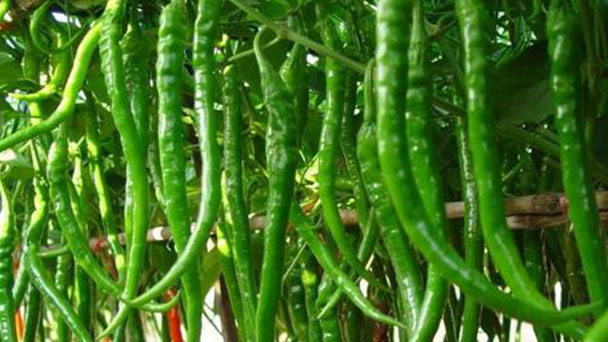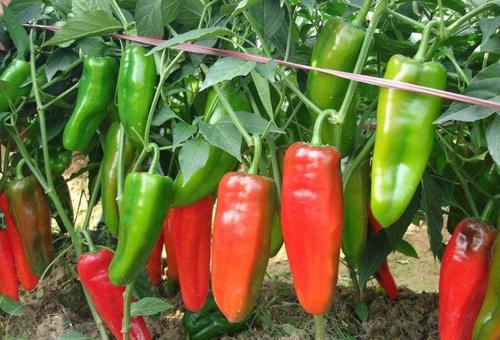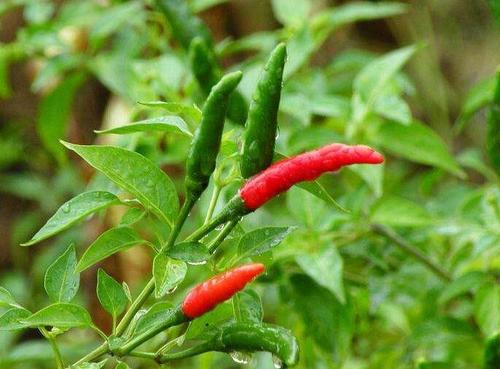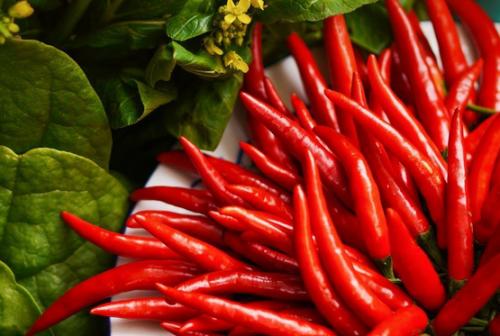Growing pepper care
Written by Maggie
Jan 28 2021

Pepper contains rich vitamin C, can control heart disease and coronary atherosclerosis, reduce cholesterol; Peppers contain more antioxidants, which can prevent cancer and other chronic diseases. With its high value, many people want to grow pepper by themselves. How to care for pepper branches blackening or leaves curly? Let's look together.

Pepper care for branches blackening
Pepper branches black and infected with soft rot, branches will appear rotten. WE need to spray agricultural streptomycin solutions. In suffering from the disease, you can strengthen water and fertilizer management, spraying chlorothalonil smoke solution. Sclerotinia disease can be turned over the soil treatment, spraying prophylaxis solution. In the case of gray mold, you can cover the surface of the soil with a layer of film, and spray with saprophyte solution. The following are pepper care for branches blackening.
1. Soft rot
If a wound in Pepper becomes infected, it can lead to bacterial growth and soft rot. Because pepper branches appear black phenomenon, not timely treatment will cause branches and fruit decay. When we care for pepper, control the planting density of Pepper, enhance air circulation, after the damaged branches are removed, spray agricultural streptomycin solution for prevention and control.
2. The disease
The disease develops quickly and eats away at Pepper twigs, mostly on the stems and roots of the plant, causing dark brown spots and white mildew on the surface of the twigs. In the growth process of Pepper, strengthen water and fertilizer management. When we care for pepper, we can apply organic fertilizer. Spray diluted chlorothalonil solution on damaged parts of Pepper for prevention and treatment.
3. Sclerotinia
Sclerotinia occurs at the intersection of Pepper branches, where white rot occurs and gradually turns into a white layer of mold that causes rot on the branches and fruits. When we care for pepper, pepper's soil needs to be turned over to kill the bacteria in the soil and prune the rotting branches and leaves. According to the frequency of once every 7 days, spray the prophylaxis solution for 2 or 3 consecutive times.
4. Gray mold
Gray mold is caused by bacteria that drop on the stems of Pepper plants in rainwater, causing them to show dark brown spots that gradually dry and rot, causing the fruit to die. When we care for pepper, a thin film is needed to cover the surface of the soil to raise the surface temperature. Cure in a ventilated and breathable place, enhance air flow, can spray putrescence solution for prevention and control.

Pepper care for leaves curl up
The reason why Pepper leaves curl up may be that the soil moisture is insufficient and needs to be watered permeable. In the process of fertilization, fertilizers and chemicals contaminated on the leaf surface need to be cleaned in time to avoid burns. Pepper should be sprayed with 5% acetamiprid or phenoxivel solution as well as special insecticide and egg killing agents to prevent and control injuries caused by thrips and mites. The following are details of Pepper care for leaves curl up.
If the environment is dry and not watered in time, the soil moisture is insufficient, which will cause the leaves of Pepper to curl up and gradually wither and fall off. Water needs to be watered at the right time. Pepper does not need much water. When we care for pepper, water should be watered after the soil becomes dry to ensure that the soil alternates between dry and wet, which will promote the growth of leaves.
Pepper needs sufficient nutrient supplement in the growing period, but in the process of fertilizing and dosing Pepper, if the concentration is too high, it will directly contaminate the leaf surface and cause burning phenomenon to the leaves. When we care for pepper, water should be diluted after fertilization, or the leaves should be washed with water to reduce drug residue.
Thrips is a pest that occurs in spring, summer and fall, causing the leaves to curl and warp by constantly sucking the juice out of Pepper leaves. When we care for pepper, choose a sunny morning, spray 5% acetamiprid or phoenixville solution for control, reduce insect breeding, promote Pepper blossom and fruit.
Mites, as a small insect pest, often produce a large number of eggs, usually attached to the underside of Pepper leaves, is not easy to find. The mite damage causes Pepper leaves to lose their luster and start to curl. When we care for pepper, we need to spray a special insecticide to kill eggs for prevention and control.

Latest Updated
- Benefits of Bugleweed - 7 Science-backed Health Benefits
- Bugleweed Dangers & Side Effects - Is It Poisonous?
- How to Plant Evergreen Trees - What You Should Know
- When to Plant Evergreens - Grow Guide for Evergreen Trees
- 12 Wonderful Evergreen Shrubs for Your Garden
- 12 Popular Evergreen Plants with Pictures for Beginners
- When And How To Prune A Lilac Bush Like a Pro
- How to Grow & Care for Lilac Vine (Hardenbergia Violacea)
- Japanese Lilac Tree (Syringa Reticulata) Care & Propagation Guide
- Shumard Oak Pros and Cons - What to Know
Popular Articles
- Winter maintenance of Antirrhinum Majus
- How to Grow Terminalia Mantaly Tree
- How to Grow and Care for Crossostephium Chinense
- How to grow Antirrhinum Majus in spring
- Peristeria Elata (Dove Orchid) Profile: Info & Care Guide
- Underwatered Snake Plant (Sansevieria Trifasciata) - Signs And How To Fix
- How to Care for Brazilian Jasmine Plant (Mandevilla Sanderi)
- How to Grow & Care for Graptopetalum Purple Delight in Summer
- Rosa Chinensis (China Rose): Plant Growing & Care Tips
- How to Care for Baby Sun Rose (Aptenia Cordifolia)